-

Sega Pico
Sega Pico is an educational video game system aimed at children. The system was also the first Sega system to carry Nintendo licensed games.
Launched on December 31, 1993
Hosts 48 games
-

Jaguar
The Atari Jaguar was the first 64-Bit game console, and Atari's final console.
Launched on November 30, 1993
Hosts 60 games
-

Amiga CD32
The Amiga CD32 was Commodore's attempt at a gaming console and what turned out to be their swan song. The majority of its library were upgraded Amiga games.
Launched on September 17, 1993
Hosts 167 games
-

Pioneer LaserActive
Pioneer LaserActive was a failed modular laserdisc-based game console notable for its use of expansion modules as well as being the second highest priced console of all time.
Launched on August 31, 1993
Hosts 16 games
-

Mega Duck
The Mega Duck is a 1993 handheld that was released in some territories under the name Cougar Boy. It was released as the Mega Duck in France, Germany, Brazil, and China. The handheld was also released as the Cougar Boy in the USA and some other countries.
Launched on August 31, 1993
Hosts 12 games
-

3DO
3DO was a video game console manufactured by Panasonic, Goldstar, and Sanyo. Despite the initial hype surrounding the system, the console's $700 price tag proved to be the ultimate kiss of death for the system.
Launched on August 31, 1993
Hosts 184 games
-

Memorex MD 2500 VIS
The Memorex MD 2500, also known as the Tandy VIS, was released in 1992. It ran a version of Windows that can be described as a precursor to WinCE and primarily focused on educational games.
Launched on December 31, 1992
Hosts 6 games
-
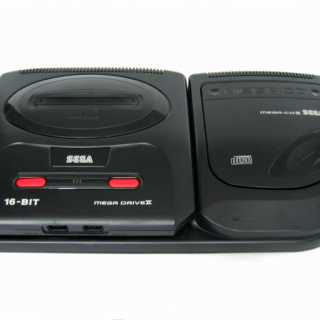
Sega CD
The Sega CD was one of the first CD-ROM based gaming consoles. The extra storage space this medium allowed gave rise to inclusion of full motion video, higher quality audio, and improved graphics in games.
Launched on October 15, 1992
Hosts 196 games
-

Watara Supervision
The Watara Supervision (known as the QuickShot Supervision in the UK) is a handheld with a Game Boy-like form factor. It was originally released in 1992.
Launched on January 01, 1992
Hosts 32 games
-

CD-i
The CD-i was the first CD-based game console. Produced by Philips, it was intended to be a computer for your living room.
Launched on December 03, 1991
Hosts 86 games
-

Linux
The Linux operating system was initially released in 1991 and has gone on to become a very popular free alternative to other, commercial systems.
Launched on October 05, 1991
Hosts 2685 games
-

Browser
Browser-based games are typically platform-independent pieces of software that run directly in the same application you use to read this web page.
Launched on August 31, 1991
Hosts 1278 games
-

Commodore CDTV
The CDTV was a repurposed Amiga 500 that focused on multimedia games and applications in the early 1990s.
Launched on March 01, 1991
Hosts 17 games
-

Gamate
The Gamate, also known as the "Super Boy" in Taiwan, is a handheld platform originally manufactured in 1990.
Launched on December 31, 1990
Hosts 16 games
-

Game Master
The Hartung Game Master is a monochrome handheld gaming machine that was marketed under different names, including the Systema 2000 and Super Game.
Launched on December 31, 1990
Hosts 18 games
-
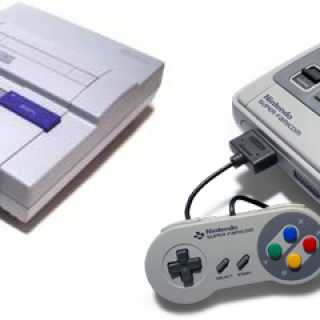
Super Nintendo Entertainment System
The Super Nintendo Entertainment System was the second home console released by Nintendo.
Launched on November 21, 1990
Hosts 1774 games
-

Game Gear
Sega's first hand held video game system. It was the portable version of the Master System.
Launched on October 28, 1990
Hosts 317 games
-
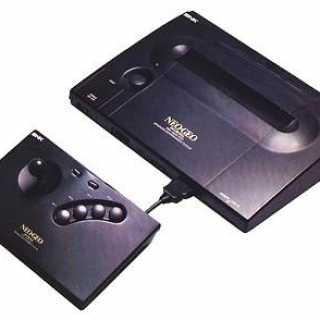
Neo Geo
The Neo Geo was a console released by SNK in 1990, featuring a 16/32-bit 68000 CPU with an additional 8-bit Z80 CPU and custom 24-bit GPU chipset. An arcade-based console considerably powerful for a home system at the time, the Neo Geo was notoriously expensive (costing $650 at launch) and aggressively marketed as an Advanced Entertainment System (AES).
Launched on January 31, 1990
Hosts 134 games
-
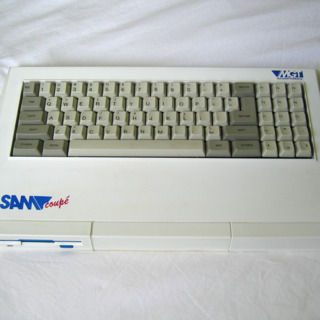
SAM Coupé
The SAM Coupé could partially emulate the ZX Spectrum, but also ran some games of its own.
Launched on December 31, 1989
Hosts 10 games
-

SuperGrafx
This upgraded PC-Engine was released in Japan in 1989. Few exclusive titles for the system were ever released.
Launched on November 30, 1989
Hosts 7 games
-

Atari Lynx
Atari's 1989 color, backlit handheld console
Launched on September 30, 1989
Hosts 87 games
-

Game Boy
Nintendo's first handheld gaming console was immensely popular among gamers, selling millions. Despite its grayscale color scheme, it still got support from developers and publishers.
Launched on April 21, 1989
Hosts 893 games
-
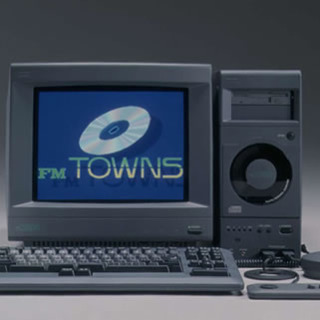
FM Towns
A proprietary 32-bit computer from Fujitsu, released in 1989 only in Japan. The first computer with a standard CD-ROM drive, it had many CD enhanced versions of Eastern and Western games (including action, adventure and RPG titles) which are sought after to this day by collectors. Its console version, FM Towns Marty, released in 1993 as the first 5th-gen console.
Launched on March 31, 1989
Hosts 187 games
-

View-Master Interactive Vision
The View-Master Interactive Vision is a VHS-based platform designed to play a small handful of Sesame Street and other edutainment-based games.
Launched on December 31, 1988
Hosts 8 games
-
VTech Socrates
The VTech Socrates was originally released in 1988.
Launched on December 31, 1988
Hosts 5 games
-

TurboGrafx-CD
NEC's CD-ROM add-on for its PC Engine / TurboGrafx-16 console. Originally released as the PC Engine CD-ROM² in Japan in 1988, this was the first system to use the CD-ROM format. It would later be released in North America as the TurboGrafx-CD in 1989. While it had little impact on the ailing TurboGrafx-16 in North America, this add-on boosted PC Engine sales in Japan.
Launched on December 04, 1988
Hosts 255 games
-

Genesis
After the cult success of their 8-bit Master System, Sega decided to give gamers a taste of their arcade capabilities with a 16-bit console. Known worldwide as the Mega Drive but called Genesis in the US, it provided graphics and sound a couple of steps below their popular System 16 arcade cabinets. The Mega Drive/Genesis turned out to be Sega's most successful console.
Launched on October 29, 1988
Hosts 927 games
-

TurboGrafx-16
The TurboGrafx-16, or PC Engine, is a console that was marketed as the first 16-bit console. It was for some time the market leader in Japan, but failed to capture a large market share in North America. It was best known for featuring the first CD-ROM peripheral, the TurboGrafx-CD. It also introduced features such as a multitap peripheral, internal save memory, and RAM expansions.
Launched on October 30, 1987
Hosts 316 games
-

Acorn Archimedes
The Acorn Archimedes was a range of personal computers from Acorn Computers aimed at both educational and home use. It featured a 32-bit ARM processor and the RISC OS operating system.
Launched on July 31, 1987
Hosts 42 games
-

Sharp X68000
The Sharp X68000 is a 16/32-bit Japanese computer platform that was originally released in 1987. It was the first home system to offer arcade-quality graphics, serving as the development machine for the Capcom CPS arcade system over the next several years. It was the most powerful home gaming system of the 1980s.
Launched on March 31, 1987
Hosts 255 games
-

Action Max
Worlds of Wonder created this VCR-based console in 1987.
Launched on December 21, 1986
Hosts 5 games
-

Apple IIgs
The Apple ][gs - which stood for "Graphics and Sound" - was Apple's upgraded version of the popular Apple ][ line of computers. The system was capable of playing standard Apple ][ games, as well as games made specifically for the GS.
Launched on November 18, 1986
Hosts 106 games
-

Atari 7800
The third console released by Atari, and successor to the Atari 5200. It features backwards compatibility with the Atari 2600.
Launched on June 30, 1986
Hosts 73 games
-

Sega Master System
The 8-bit Master System, while not embraced by a large audience in the US and Japan, was a major success in Europe and South America, and it remains an important and entertaining console that laid the foundation for generations of future console releases from Sega.
Launched on October 20, 1985
Hosts 349 games
-

Amstrad PCW
Amstrad's PCW was primarily built as a word processor that was cheaper than the other computers offered at the time. Some games were also made available for the platform.
Launched on September 01, 1985
Hosts 0 games
-
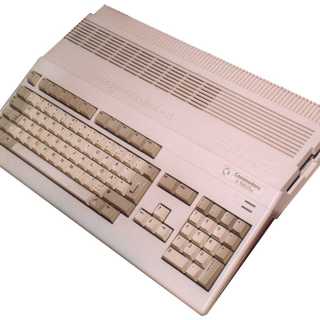
Amiga
The Amiga was a personal computer from Commodore that was released in a variety of different configurations.
Launched on July 23, 1985
Hosts 2448 games
-

Atari ST
Atari's 16-bit computer line was one of the most popular computers in the mid-1980s to early 1990s.
Launched on June 01, 1985
Hosts 1619 games
-

Commodore 128
The Commodore 128 is the successor to the extremely popular Commodore 64 computer. The Commodore 128 is the last 8-bit computer produced by Commodore Business Machines.
Launched on January 31, 1985
Hosts 43 games
-

RDI Halcyon
The RDI Halcyon was a short-lived laserdisc-based game platform. Only two games were properly released for the system. It was the most expensive video game console ever released, retailing at $2,500.
Launched on December 31, 1984
Hosts 4 games
-

Commodore 16
Commodore's successor to the VIC-20 that never sold well.
Launched on September 01, 1984
Hosts 85 games
-
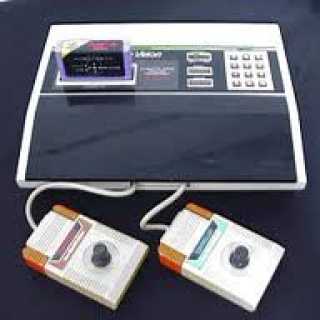
Super Cassette Vision
Epoch's follow-up to the Cassette Vision was released in 1984.
Launched on July 31, 1984
Hosts 24 games
-

Amstrad CPC
The Amstrad CPC (Colour Personal Computer) was a series of 8-bit personal computers developed by Amstrad between 1984 and 1990. During its lifetime, approximately 3 million CPCs were sold.
Launched on June 21, 1984
Hosts 1349 games
-

Hitachi S1
The Hitachi S1 is a home computer that was primarily sold in Japan, but also in parts of Australia. It used proprietary 5.25" floppy disks.
Launched on May 01, 1984
Hosts 0 games
-

Epoch Game Pocket Computer
The Epoch Game Pocket Computer was released in Japan in 1984. It features a 75x64 resolution LCD screen with two built-in games. Only five other game cartridges were released.
Launched on April 01, 1984
Hosts 0 games
Use your keyboard!
- ESC
Log in to comment